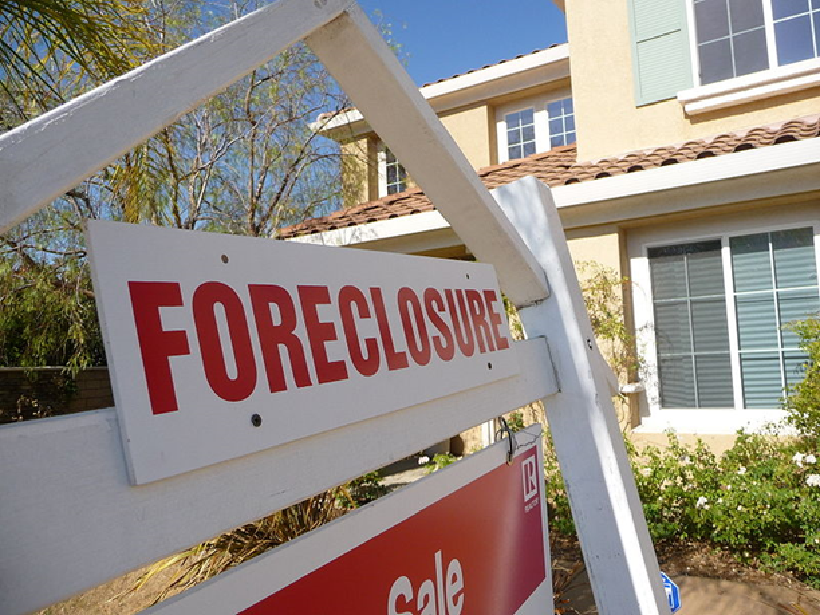A lot has changed since 2008. Before the financial crisis hit in 2007, it was pretty easy to buy a home, even in California with our sky-high real estate prices. Home buyers could choose from a wide assortment of loan products, such as balloon payment loans or adjustable-rate mortgages. You could even buy a home with bad credit and little to no money down.
But the mortgage industry, real estate agents, and home buyers have learned a lot from the mistakes of a decade ago, and hopefully, these lessons have created more financial security and wealth for the industry and homeowners alike. Here are some ways the industry has changed since the financial crisis.
1. You need a credit score that’s above 620 to even qualify for a home loan.
According to a recent article in the Washington Post, today you need a credit score of at least 620 to even qualify for a home loan. And if your credit score is anything below 760, you’ll most likely be paying more for your loan.
According to mortgage analytics company Ellie Mae, in July of 2018, 70 percent of borrowers had a FICO score that was 700 or higher, and the average FICO score for conventional loans was 751. This is more than 100 points higher than what was required to get the very best mortgage rates in 2004.
2. The types of mortgages available are more limited.
Today, the types of home loans available are far more limited than they were over a decade ago. You can get a fixed-rate mortgage or an adjustable rate mortgage (ARM). However, the ARM has to meet strict “Qualified Mortgage” standards, which were established by the Consumer Financial Protection Bureau (CFPB).
The ARMs that are available today have maximums placed on the interest rates, so they can’t increase by too much in a short period of time. In addition, to get this kind of mortgage, you have to qualify for the highest rate that the loan might reach.
3. New California laws have reduced the number of foreclosures.
According to an article by the Brookings Institution, in 2008 and early 2009, California passed laws that included requirements for lenders and servicers. These laws stipulate that lenders must make reasonable efforts to modify loans before they can begin foreclosure proceedings. As a result, foreclosures have been reduced by 16 percent, with 124,000 fewer California homeowners losing their homes. Furthermore, these laws have preserved over $310 billion in housing wealth in California. By contrast, the federal government did not pass these kinds of laws, which led to a higher percent of foreclosures outside of California.
4. Regulations now prevent appraisers and loan underwriters from sharing too much information.
Before the housing bubble burst, appraisers and lenders might communicate directly, with lenders expressing their expectations to the appraiser about what they thought a home value should be.
James Murrett, president of the Appraisal Institute and an executive managing director of Colliers International Valuation Corp. in Hamburg, N.Y. said in the Washington Post, “Regulations are in place now to put a firewall between the appraisal process and the underwriting process.”
5. “Know Before You Owe” rules have made the mortgage process more transparent for buyers.
Before the housing crash, many new homeowners did not fully understand all the fees, changing interest rates, and other aspects of their home loans.
Today, the CFPB’s “Know Before You Owe” disclosure rule has brought more transparency to the process. This includes a user-friendly three-page Loan Estimate that shows buyers whether they could face a balloon payment or a possible increase in their mortgage rate at any point.
6. Purchasers are more cautious before they buy.
Even if a renter or homeowner didn’t lose a home in the financial crisis, they were exposed to people who did. “If you weren’t part of the home-buying bubble, you were part of the economic fallout, or you knew someone who lost their home to a foreclosure or short sale,” said Elizabeth Mendenhall, president of the National Association of Realtors and a Realtor with Re/Max Boone Realty in Columbia, Mo. in the Washington Post. “As a result, people are having deeper discussions before they buy to make sure they don’t end up losing their home.”
7. People aren’t flipping houses like they used to.
Before the housing crash, many people were purchasing more than a primary residence. The opportunities to buy and flip houses was tempting because you could make a lot of money quickly. But when too many people found themselves under water with not one, but two or more homes, this soured the market for flipping houses to all but the least risk-averse.
8. At least 5.2 million households still owe 25 percent more than their homes are worth.
While the economy has mostly recovered from the housing crisis, many people are still under water with their homes. It’s estimated that 5.2 million U.S. households still owe at least 25 percent more on their homes than what the property is worth. This equates to 9.5 percent of U.S. households with a mortgage.This inability to sell their homes for a profit means less inventory for new home buyers. “A lack of mobility is holding back the housing ladder,” said Sam Khater, chief economist of Freddie Mac in McLean, Va. in the Washington Post. “People used to stay in their homes about five years and now it’s about 10 years. Seniors are holding onto their homes longer in part because they’re working longer and because they have very low interest rates. In addition, they don’t often like what’s available to buy. GenXers bought their homes at the peak of the market, so they’re still waiting to build more equity.
9. A shortage of construction labor is slowing down new development, leading to less supply.
Across the U.S. Bureau of Labor Statistics, there is a shortage of construction workers to build new homes, which is hurting overall supply. According to Rob Dietz, chief economist of the National Association of Home Builders (NAHB), as reported in the Washington Post, “There are currently 263,000 unfilled construction jobs.”
10. Today’s high rents are preventing people from being able to save for a home.
Today it’s a little easier for buyers with high debt-to-income ratios to get loans because rents are so high. It’s not uncommon for people to be spending 40 to 50 percent of their incomes on rent. This shows lenders that they can handle a high mortgage payment. However, high rents means fewer people are able to save for a downpayment.
11. Owning a home is still a part of the American Dream.
Even though 10 million people lost their homes in the housing crash, equating to a total loss of $16 trillion in net worth, says the Washington Post, the majority of Americans still dream of owning their own homes. Today, 75 percent of Americans who do not currently own a home say they wish they did.





